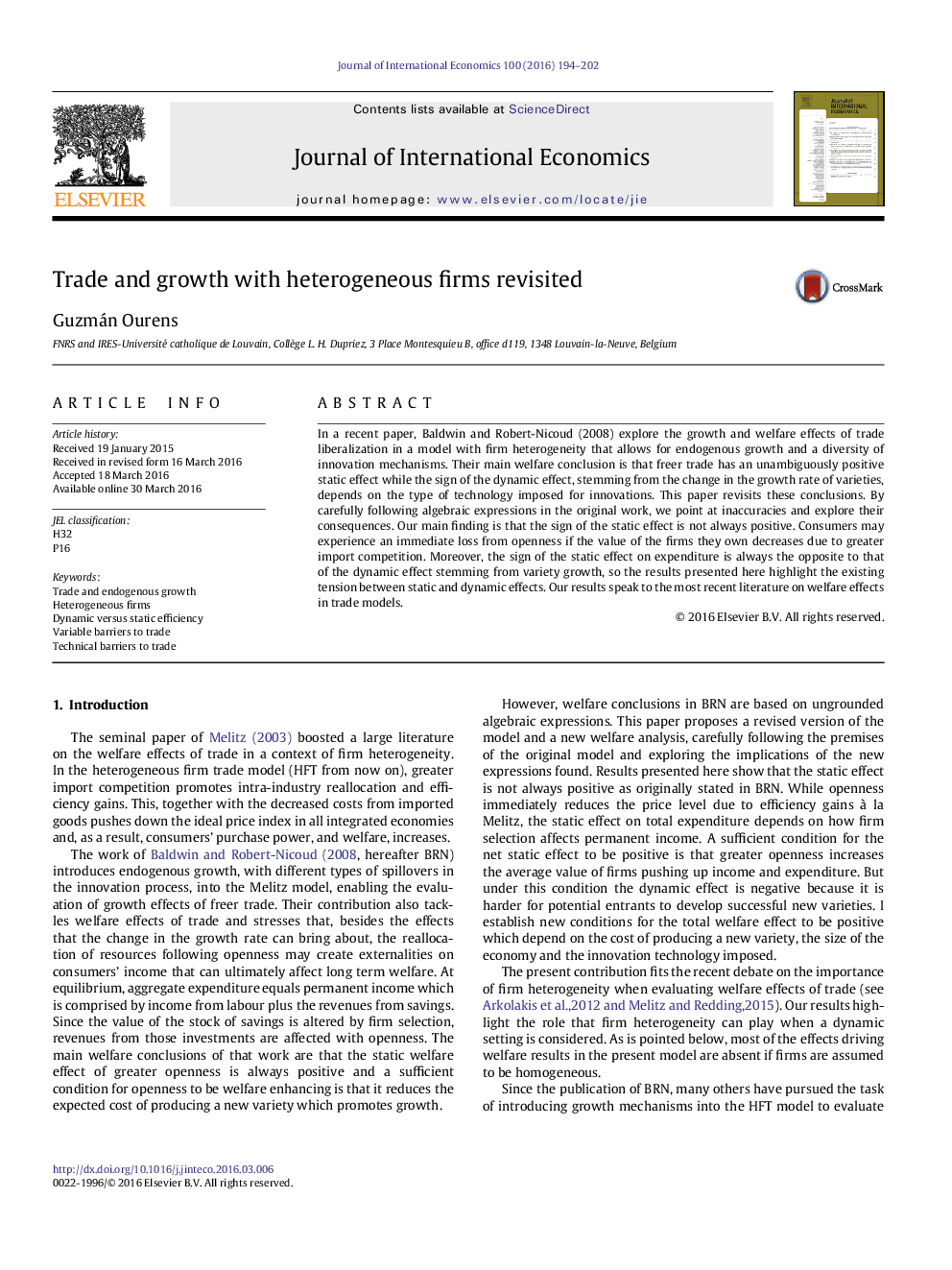| Article ID | Journal | Published Year | Pages | File Type |
|---|---|---|---|---|
| 962430 | Journal of International Economics | 2016 | 9 Pages |
Abstract
In a recent paper, Baldwin and Robert-Nicoud (2008) explore the growth and welfare effects of trade liberalization in a model with firm heterogeneity that allows for endogenous growth and a diversity of innovation mechanisms. Their main welfare conclusion is that freer trade has an unambiguously positive static effect while the sign of the dynamic effect, stemming from the change in the growth rate of varieties, depends on the type of technology imposed for innovations. This paper revisits these conclusions. By carefully following algebraic expressions in the original work, we point at inaccuracies and explore their consequences. Our main finding is that the sign of the static effect is not always positive. Consumers may experience an immediate loss from openness if the value of the firms they own decreases due to greater import competition. Moreover, the sign of the static effect on expenditure is always the opposite to that of the dynamic effect stemming from variety growth, so the results presented here highlight the existing tension between static and dynamic effects. Our results speak to the most recent literature on welfare effects in trade models.
Related Topics
Social Sciences and Humanities
Economics, Econometrics and Finance
Economics and Econometrics
Authors
Guzmán Ourens,
